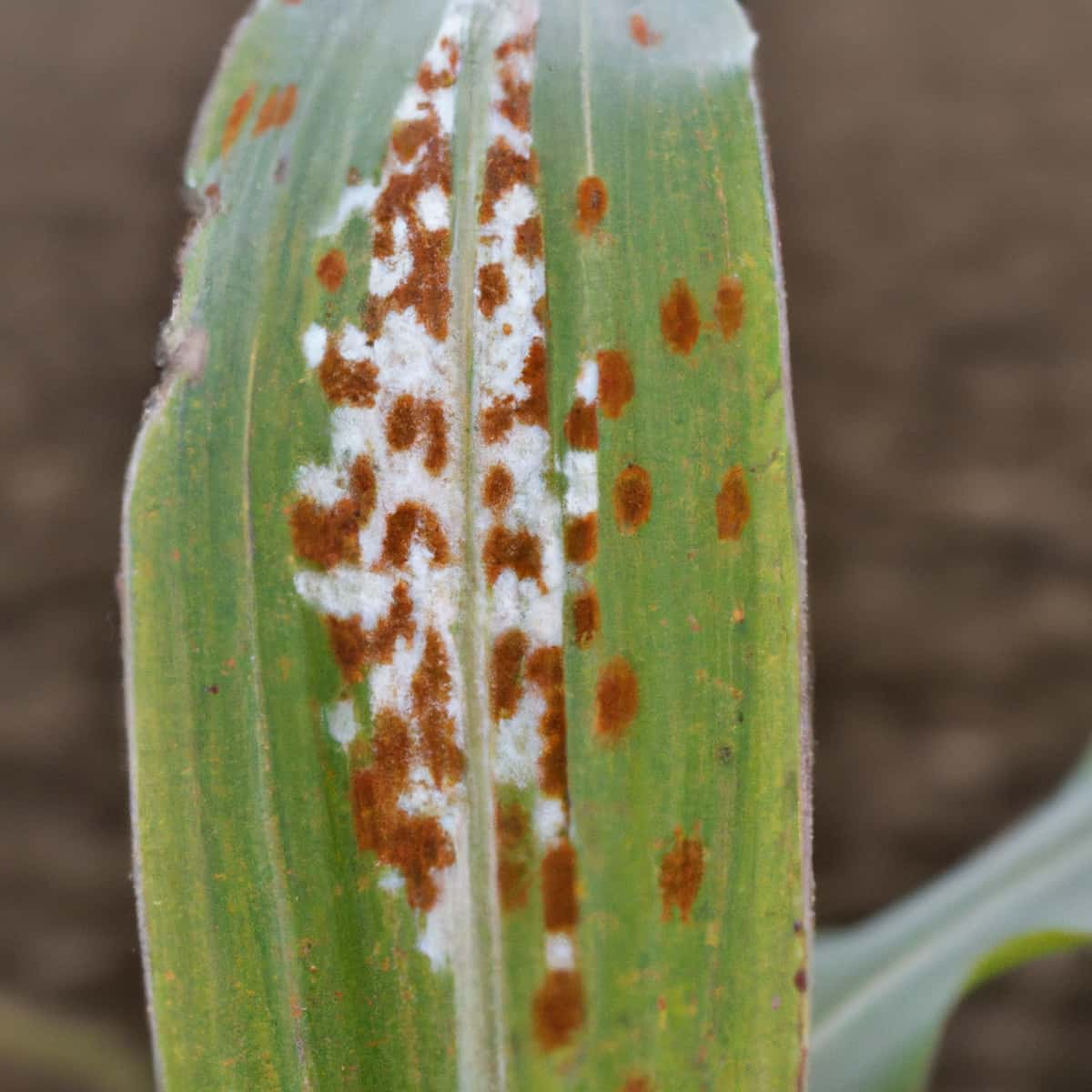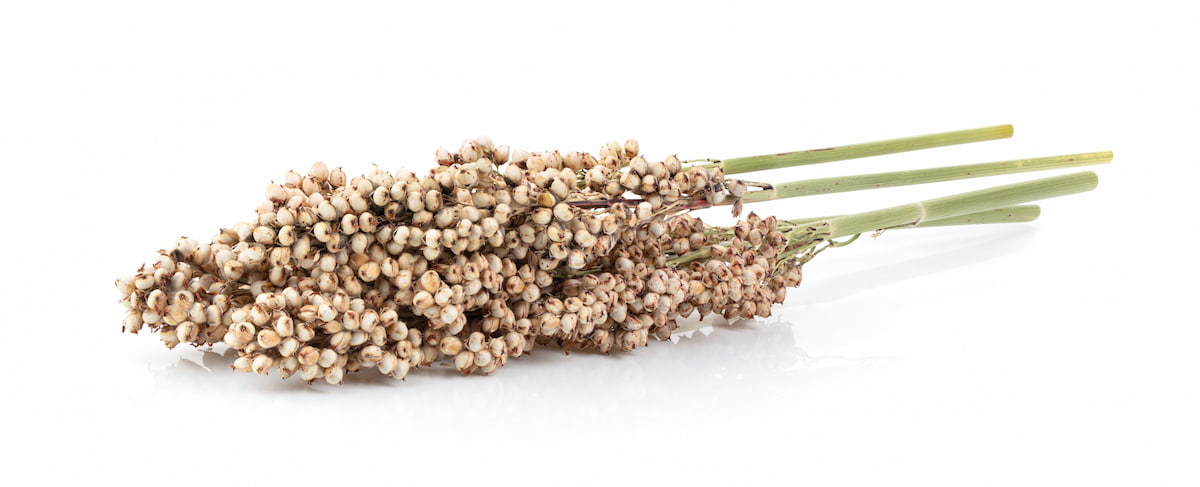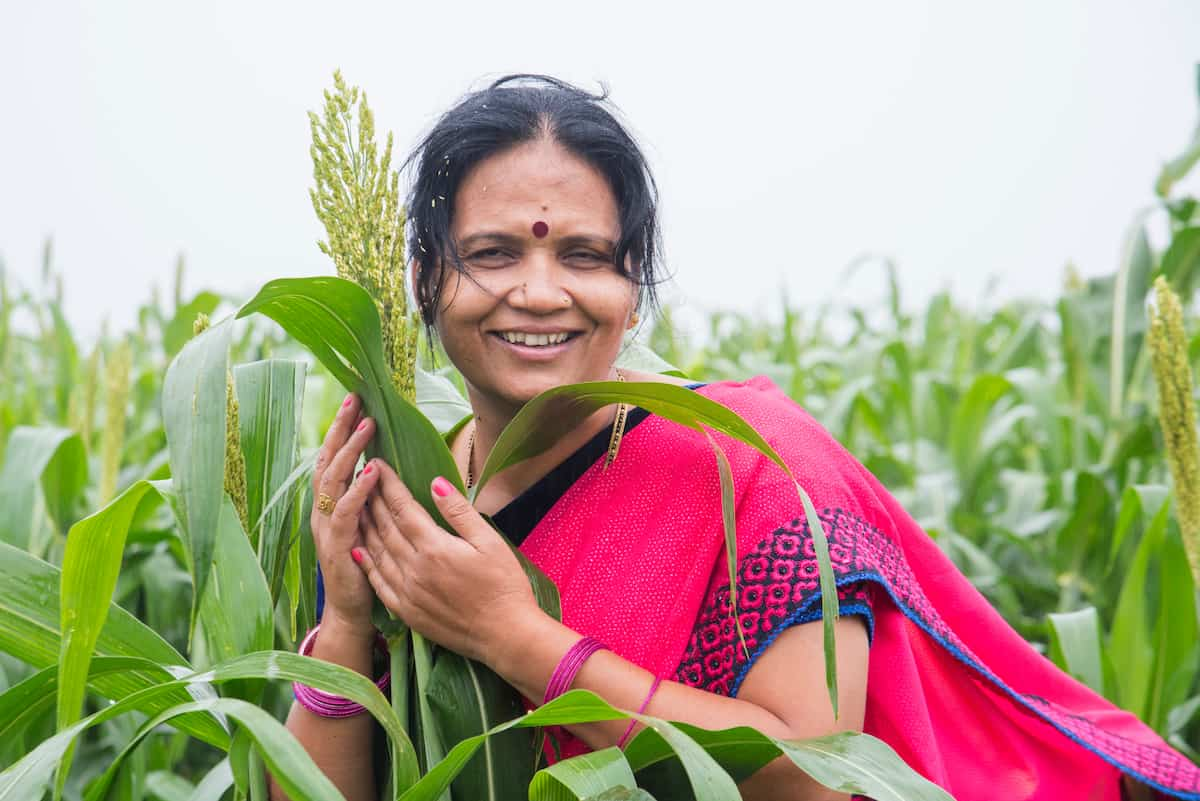Rectangular leaf spot disease is a major fungal disease of sorghum, a cereal crop grown in many areas of the world. The disease infects the leaves, stems, and panicles of sorghum plants. The disease is most severe in warm, humid climates and is typically seen in the United States’ southern states. The disease can spread rapidly within a field and lead to significant sorghum production losses.

To prevent and manage this disease, sorghum producers must understand the disease cycle, its environmental interaction, and risk factors. Cultural practices such as crop rotation, resistant cultivars, and fungicide applications can all be used to manage and reduce the incidence of the disease. This article will provide an overview of sorghum rectangular leaf spot disease, including its symptoms, biology, and control.
Rectangular Leaf Spot Management in Sorghum
The Causal Organism of Sorghum Rectangular Leaf Spot Disease
- Cercospora sorghi, a member of the Ascomycota, an obligate parasite, is a saprophyte living on decaying organic matter.
- The fungus is most commonly found in warm and humid climates, and sorghum grown in these conditions is most susceptible to infection.
- The Mycelium of the fungus is transparent and septate or compartmentalized.
- Conidiophores arise in groups via stomata that are brown-colored and simple in structure, occasionally branched.
- Conidia are transparent, thin-walled, ranging between bi-cellular to multi-cellular, long, and thickened at the distal end.
The Disease Cycle of Sorghum Rectangular Leaf Spot Disease
When the fungus infects sorghum, small, circular, yellow spots at first develop on the leaves. The spots enlarge and multiply as the disease worsens, ultimately fusing to form irregularly shaped, rectangular spots. These spots can be found on both sides of the leaf and range in hue from dark brown to black. A yellow halo may form around the spots as the disease progresses. The fungus can also harm sorghum plant stalks and seeds.
Mode of Spread and Survival of the Pathogen in Sorghum Crop
- The conidia stay viable for up to 5 months. The disease is dispersed through air-borne and seed-borne conidia.
- It is spread by wind, rain, and contact with infected plants, and can survive in the soil for several years. Once the fungus is established in a field, eradicating it cannot be easy.
Causes / Conditions Favorable for Sorghum Rectangular Leaf Spot Disease Spread in the Field.
- High Humidity & Rainfall – The rainy weather and humidity of up to 90% facilitate the disease incidence.
- Temperature – Cooler and more moist weather conditions help spread the disease.
Symptoms of Sorghum Rectangular Leaf Spot Disease
- Symptoms of the disease include chlorotic or necrotic lesions on the plant’s leaves, with a rectangular shape. Lesions can also be found on stems, panicles, and husks of sorghum plants.
- This disease is characterized by rectangular-shaped lesions on the plant leaves, which can result in leaf yellowing, premature death of leaves, and yield losses. The leaves may also curl, wither, and die.
- The rectangular lesions are 5-15mm long and 2-5mm wide. Generally, the lower side of the leaves is attacked first. The lesions appear deep red, brown, or purple with lighter centers based on the variety and are restricted by veins.
In case you missed it: Ergot or Sugary Management in Sorghum: Disease Symptoms, Treatment, Chemical, Biological, Natural, and Organic Control

Percentage of Yield Loss Due to Sorghum Rectangular Leaf Spot Disease in Sorghum Crop
- The severity of SRLSD varies depending on environmental conditions, but the disease can cause significant yield loss.
- Sorghum Rectangular Leaf Spot Disease (SRLSD) is a serious disease that can cause yield losses of up to 80% in sorghum crops.
Diagnosis of Sorghum Rectangular Leaf Spot Disease in Sorghum Crop
- In order to diagnose SRLSD, a visual inspection of the leaves is usually conducted. If the disease is suspected, a sample of the affected leaves should be collected and sent to a laboratory for testing.
- The laboratory test involves culturing the fungus in a Petri dish and examining the growth for the presence of the characteristic curved, septate hyphae.
Cultural Control Measures of Sorghum Rectangular Leaf Spot Disease
- Early planting promotes a longer period of crop development before the onset of the disease, which helps to limit the disease’s ability to spread.
- After harvest, equipment must be thoroughly cleaned, and crop residues must be removed from the area to control the spores and fungi that can spread infection.
- Crop rotation entails planting sorghum in a field that wasn’t previously used to grow the same grain. Reduce the disease burden by rotating sorghum with other crops like maize, millet, or wheat.
- Tillage: By burying the diseased plant matter and lowering the quantity of available inoculum on the soil surface, tillage techniques can help control the spread of the disease.
- Selecting resistant sorghum types can help lessen the effects of the disease known as Sorghum rectangular leaf spot. There are accessible disease-resistant varieties that ought to be chosen when planting.
- Irrigation: To lessen the severity of the illness, proper irrigation techniques should be used. Avoiding over-irrigation is crucial because the disease flourishes in moist environments.
- Roguing Out: To stop the disease from spreading, infected plants must be removed and burned.
Biological Control Measures of Sorghum Rectangular Leaf Spot Disease
- Fungal antagonists: Some fungus antagonists have been found to have promise for treating SRLSD. Trichoderma viride is one instance of a species that makes substances that can stop the disease from growing. It is sprayed on the leaves of the sorghum trees and used as a seed treatment.
- Bacterial antagonists: It has been discovered that many microbes may be useful in treating SRLSD. For instance, Pseudomonas fluorescens can create substances that prevent the pathogen from growing. It is sprayed on the leaves of the sorghum stalks or used as a seed treatment.
- Viral antagonists: For instance, it has been discovered that the Cowpea Chlorotic Mottle virus (CCMV) is efficient in containing SRLSD. It is sprayed onto plant foliage or used as a seed treatment.
- Numerous biopesticides have been created for the control of SRLSD. These consist of Bacillus spp. and Streptomyces spp. Preparations. It can be sprayed on plant foliage or used as a seed treatment.
Chemical Control Measures of Sorghum Rectangular Leaf Spot Disease
- Fungicides are typically applied as a spray, either at the first signs of disease or as a preventative measure. Commonly used fungicides for SRS include mancozeb, chlorothalonil, propiconazole, and tebuconazole.
- Seed Treatment – Treat the seeds with Captan or Thiram at 4 grams/kg.
- Spray Application – Apply Mancozeb at 2 kg/ha.
In case you missed it: Downy Mildew Disease Management in Sorghum: Symptoms, Treatment, Chemical, Biological, Natural, and Organic Control

Preventive Measures for Control of Sorghum Rectangular Leaf Spot Disease
- Monitor fields regularly – Monitoring fields for signs of disease will help catch and manage it early before it spreads.
- Planting the disease-free seed – Planting disease-free seed is essential in preventing the spread of Sorghum Rectangular Leaf Spot Disease. Therefore, it is important to ensure that the seed is free of any fungal diseases before planting.
- Avoiding overhead irrigation – Overhead irrigation can help to spread the disease. Therefore, it is important to avoid using overhead irrigation when possible.
- Pruning – Pruning can help to reduce the spread of the disease. Pruning off infected leaves can help reduce the number of fungal spores on the plants.
Conclusion
Sorghum Rectangular Leaf Spot Disease, a fungal disease that impacts sorghum crops globally, costs farmers a significant loss. The disease is widespread in North America, Africa, Asia, and Oceania. Crop rotation, irrigation, and resistant cultivars can control the disease. Fungicides can lessen disease severity. Farmers must be aware of the disease and take precautions to avoid crop losses.
- Beneficial Insects in Pest Management
- Natural Solutions for Pest Control in Flower Gardens
- Types of Fungicides Used in Agriculture
- Common Issues in the Fruit Development Stage of Pomegranate Farming
- Fruit Development Issues in Papaya: Easy Solutions and Treatment
- Soil-Borne Diseases and How to Protect Your Plants
- Practices to Prevent Disease Spread in the Garden
- From Wilted to Thriving: How to Treat Root Rot Naturally in Houseplants
- Natural Remedies to Cure Brown Spots on Fig Tree Leaves
=